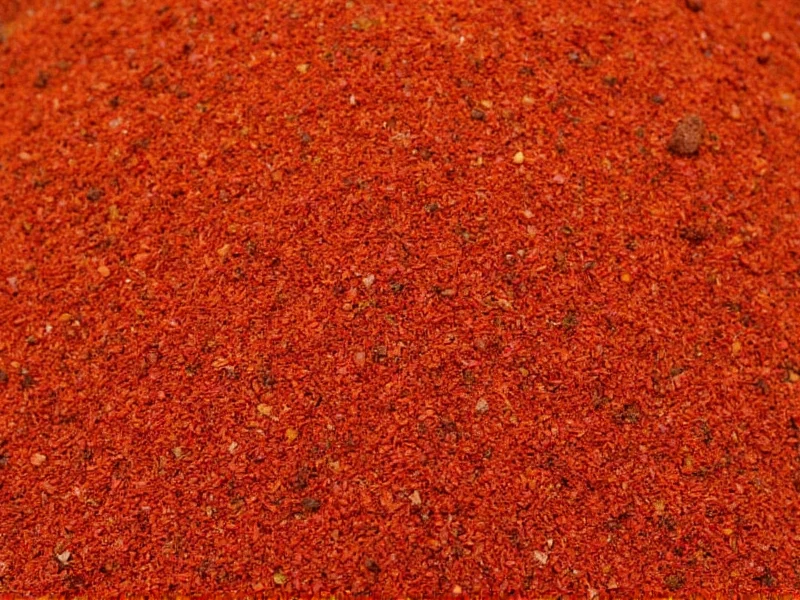When you're standing in the spice aisle or following a recipe that calls for one of these fiery ingredients, understanding the distinction between crushed red pepper and cayenne pepper is crucial for achieving the intended flavor profile. Many home cooks mistakenly treat them as interchangeable, which can lead to unexpectedly mild or painfully hot dishes.
Breaking Down the Key Differences
The confusion between crushed red pepper and cayenne pepper stems from their visual similarity and overlapping use in spicy cuisine. However, their composition, heat intensity, and culinary applications reveal important distinctions that every cook should know.
Ingredient Composition
Crushed red pepper is typically a mixture of various dried, crushed chili peppers. Most commercial blends include cayenne peppers along with other varieties like serrano or red jalapeño. This creates a more complex flavor profile with varying heat levels between brands. Pure cayenne pepper, by contrast, contains only ground cayenne peppers—nothing else. This single-ingredient nature makes cayenne more consistent in both heat and flavor.
Heat Level Comparison
Understanding the Scoville scale measurements clarifies why substituting one for the other can dramatically alter your dish:
| Spice Type | Scoville Heat Units | Relative Heat Level |
|---|---|---|
| Cayenne Pepper | 30,000-50,000 SHU | Very Hot |
| Crushed Red Pepper | 1,500-20,000 SHU | Mild to Medium-Hot |
| Red Pepper Flakes (Alternative Name) | Varies by blend | Mild to Medium |
This significant difference in heat intensity means that substituting cayenne for crushed red pepper in equal amounts will likely make your dish much spicier than intended. The reverse substitution might leave your dish disappointingly mild.
Flavor Profiles
Beyond heat, these spices offer distinct flavor characteristics:
- Cayenne pepper delivers a straightforward, intense heat with subtle earthy and slightly fruity notes
- Crushed red pepper provides a more complex flavor profile with varying degrees of smokiness, fruitiness, and earthiness depending on the specific pepper blend
When you use crushed red pepper, you're getting the nuanced flavors of multiple chili varieties, while cayenne offers a more singular, focused heat experience.
Substitution Guidelines for Cooking
While not identical, you can substitute one for the other with careful adjustments. Understanding the difference between red pepper flakes vs cayenne measurements is essential for successful substitution.
When to Substitute Crushed Red Pepper for Cayenne
If your recipe calls for cayenne but you only have crushed red pepper:
- Use 1½ to 2 times the amount of crushed red pepper to achieve similar heat
- Start with less and taste as you go—crushed red pepper's heat varies by brand
- Best for dishes where complex pepper flavor is welcome, like pizza, pasta, or roasted vegetables
When to Substitute Cayenne for Crushed Red Pepper
If substituting cayenne for crushed red pepper:
- Use only ¼ to ½ the amount of cayenne compared to crushed red pepper
- Add gradually and taste frequently to avoid overpowering heat
- Ideal for recipes needing consistent, intense heat like hot sauces, Cajun dishes, or spice rubs
Common Misconceptions Clarified
Several myths persist about these spices that deserve clarification:
Myth: Crushed red pepper is just cayenne in flake form
Reality: While cayenne is often included in crushed red pepper blends, the latter typically contains multiple chili varieties. Pure cayenne flakes would be labeled specifically as such.
Myth: The terms are completely interchangeable in recipes
Reality: Due to the significant heat difference, direct substitution without adjustment will alter your dish's spiciness. Understanding crushed red pepper vs cayenne measurements prevents culinary disasters.
Myth: All crushed red pepper has the same heat level
Reality: Heat varies considerably between brands based on the specific chili varieties used and their proportions. Always taste your crushed red pepper before using it in precise recipes.
Practical Usage Tips
Knowing when to use each spice enhances your cooking:
Best Uses for Crushed Red Pepper
- As a finishing spice on pizza, pasta, or eggs
- In olive oil for dipping bread
- When you want visible red flecks in your dish
- For recipes needing moderate, complex heat
Best Uses for Cayenne Pepper
- In spice blends and rubs where consistent heat is crucial
- When making hot sauces or salsas
- In recipes where you don't want visible spice particles
- For dishes requiring intense, straightforward heat
Storage Recommendations
Both spices lose potency over time, but proper storage extends their shelf life:
- Store in airtight containers away from light and heat
- Keep in a cool, dark cupboard (not above the stove)
- Whole dried peppers last longer than crushed or ground forms
- Replace ground spices every 6-12 months for optimal flavor
Understanding Regional Variations
The confusion between crushed red pepper and cayenne pepper is compounded by regional naming differences. In some areas, "crushed red pepper" specifically refers to a blend, while in others it might be used interchangeably with "red pepper flakes." Similarly, cayenne pepper might be labeled simply as "red pepper" in certain regions. Always check ingredient lists when precise heat levels matter for your recipe.











 浙公网安备
33010002000092号
浙公网安备
33010002000092号 浙B2-20120091-4
浙B2-20120091-4